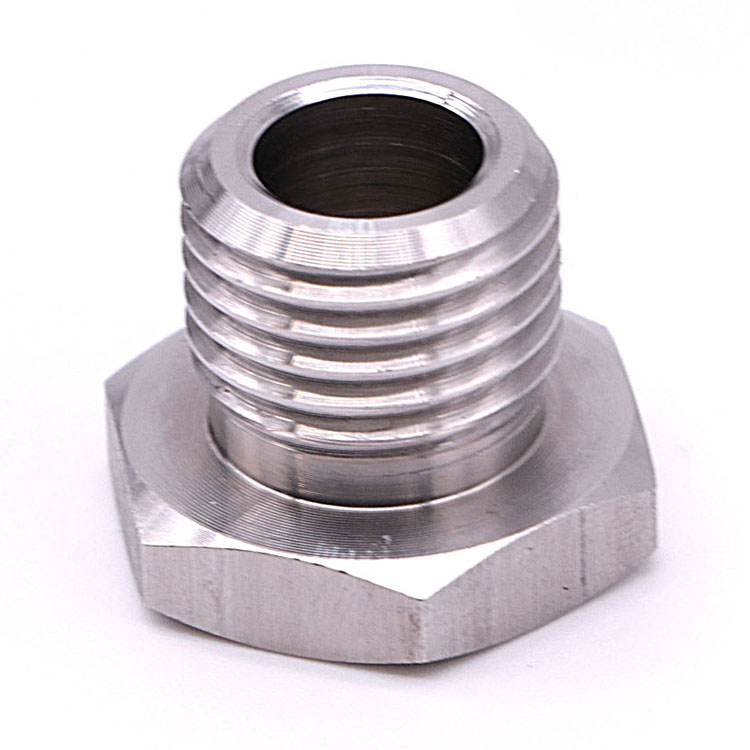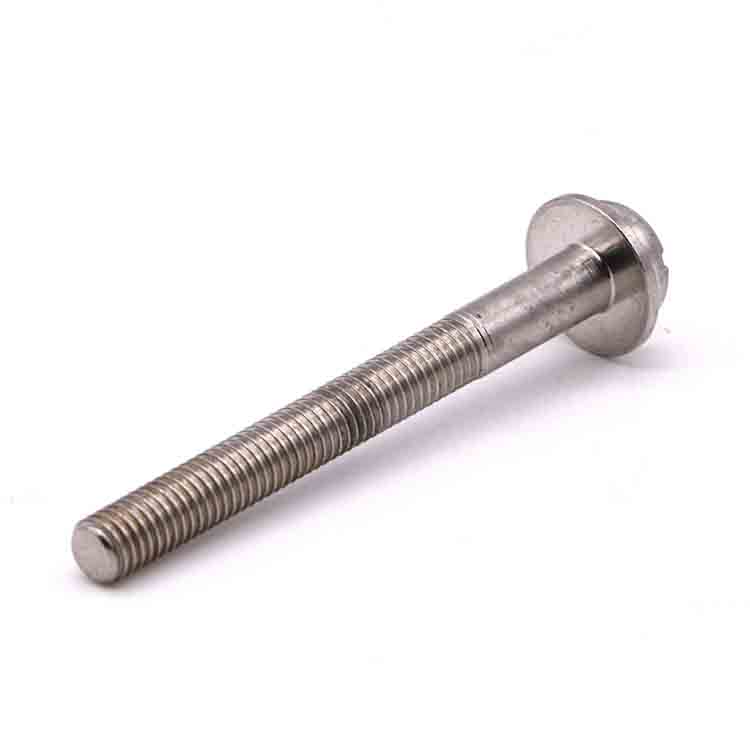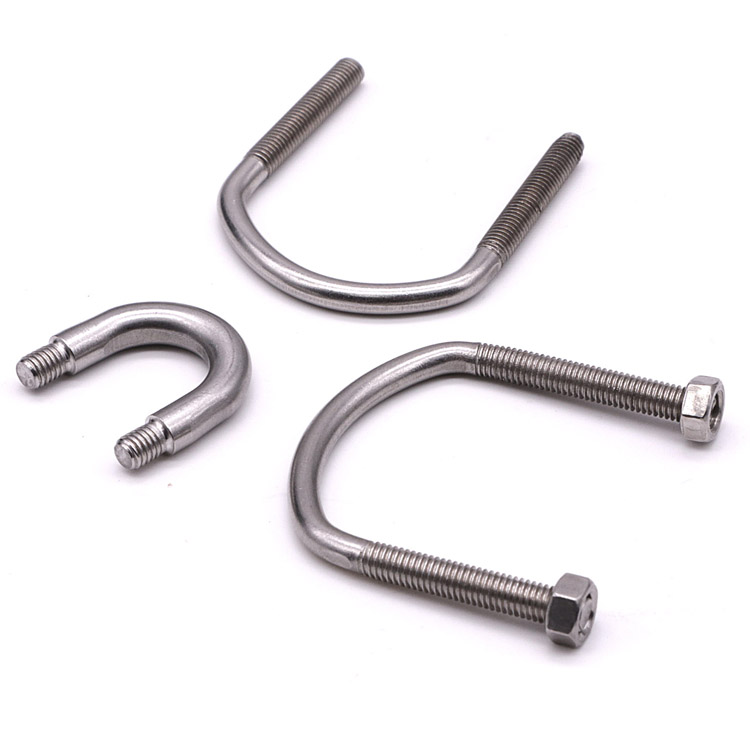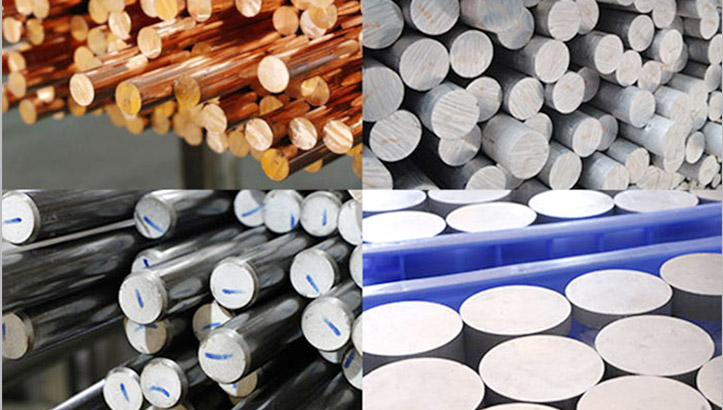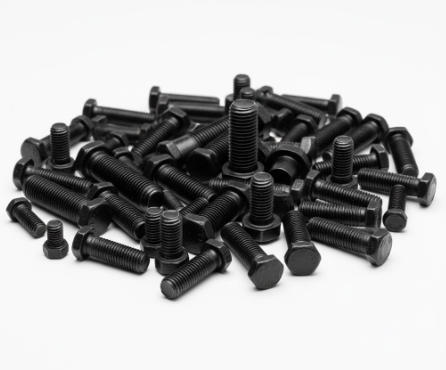12 Different Types of Bolts and Their Applications
Bolts are essential fasteners in construction, manufacturing, and other industries that provide secure, removable connections between materials. Understanding the different types of bolts and their uses is essential to choosing the right fastener for any project. In this article, we will explore twelve common bolt types and their applications.
12 Common Bolt Types and Their Applications
Bolts are one of the most essential fasteners used in mechanical and structural assemblies. They come in various designs, materials, and strengths to meet specific requirements across industries such as construction, automotive, and machinery. Below is the 12 common bolt types and their typical applications.
1. Hexagon Bolt
Features:
Hexagonal bolts, also known as hexagonal cap screws, are characterized by their hexagonal head design, which makes it very easy to tighten with a wrench or socket. Hexagonal bolts are not only of various types and sizes, but also The material selection is also very flexible, including steel, stainless steel and brass.
Application:
Hexagonal bolts are widely used in construction, machinery, and automotive assembly due to their high strength and ease of use. Hexagonal bolts are ideal for fastening wood, steel, and other materials in heavy-duty applications such as bridges, buildings, and structural components.
2. Carriage Bolt
Features:
The unique feature of a carriage bolt is that it has a round head and a square neck underneath the head. This square neck cleverly prevents the bolt from rotating when the nut is tightened on the other side, ensuring a stable and secure connection.
Application:
Carriage bolts are often used for fastening wood and metal due to their unique design, especially in applications where the bolt head needs to be smooth and unobtrusive. For example, carriage bolts are favored for their aesthetics and practicality in fence structures, decks, and dock facilities.
3. Square Head Bolts
Features:
Lag bolts, also known as lag screws, are large and heavy fasteners. Their coarse thread design allows them to withstand huge pulling forces and is suitable for fastening heavy materials. Before use, they usually need to be pre-drilled to ensure that the bolts can be installed smoothly.
Application:
Lag bolts are primarily used for wood-to-wood or wood-to-masonry connections. In construction, they are often used to secure key structural components such as columns, beams, and frames. Lag bolts also play a vital role in outdoor structures such as decks and when securing heavy objects to concrete or brick walls.
4. Eyebolt
Features:
An eyebolt is designed with a ring at one end, which makes it easy to connect a rope or chain for lifting and securing purposes.
Application:
Eyebolts are widely used in lifting, rigging and securing applications. These applications often require vertical lifting of loads, so the reliability and strength of eyebolts are essential. In industrial and marine environments where lifting is required, eyebolts are trusted for their excellent performance and safety.
5. Anchor Bolt
Features:
Anchor bolts are fasteners used to secure structures to concrete. They have threads on the end that allow for easy installation of nuts and washers. In addition, anchor bolts can be bent into L-shapes or other shapes as needed to accommodate different installation needs.
Application:
Anchor bolts play a vital role in the construction industry. They are often used to secure structures such as building foundations, heavy machinery and steel columns to earth structures. Anchor bolts are ideal for load-bearing applications due to their excellent strength and stability. In various scenarios where they need to withstand huge pressure and tension, anchor bolts can ensure the safety and stability of the structure with their excellent performance and reliability.
6. Shoulder Bolt
Features:
Shoulder bolts feature an unthreaded section, called a shoulder, between the head and the threaded portion. This design allows rotational movement of mechanical components while ensuring stability and reliability of the connection.
Application:
In the mechanical and automotive industries, shoulder bolts are often used for pulleys, gears, and moving parts that need to rotate or slide. They can ensure that these parts maintain a stable connection during movement, thereby improving the performance and life of the equipment.
7. J-Bolt
Features:
J-bolts, also known as right-angle bolts, are unique in that their shape resembles the letter “J” and are designed for embedded fastening. This type of bolt not only fits tightly and provides strong fastening force, but is also made of high-strength materials to ensure that it remains stable and reliable in harsh environments and heavy load conditions.
Application:
J-bolts play an important role in structural applications, such as fixing walls to concrete foundations to ensure the stability and safety of the structure. At the same time , in fence installations, they are often embedded in concrete to fix the foundation structure and provide solid support for the fence.
8. Flange Bolts
Features:
The characteristic of flange bolts is that a built-in washer is cleverly designed under the head. This unique design allows the load to be dispersed more effectively and the pressure can be evenly distributed over a larger surface area. This design not only significantly enhances the stability of the connection, allowing the fastener to maintain excellent performance in various application scenarios, but also greatly improves the durability of the connection, ensuring the reliability and safety of the fastener during long-term use.
Application:
Flange bolts are widely used in the automotive industry and mechanical assembly. Especially in areas that require high vibration resistance, such as the connection of key components such as engines and gearboxes, flange bolts are highly trusted for their excellent performance and stability.
9. Square Head Bolts
Features:
Square head bolts are eye-catching with their unique four-sided head design. This design not only gives the tool a better grip, allowing operators to apply force more easily during tightening or loosening, but the shape of the four-sided head also increases the contact area with the tool, further improving the stability and accuracy of the operation, making the entire tightening or disassembly process more efficient and convenient.
Application:
In addition to their important role in historic restoration projects, square head bolts are widely used in heavy-duty industrial applications where a secure grip is required. Square head bolts are favored for their ease of handling in environments where tools have difficulty handling round or hex heads.
10. U-Bolt
Features:
U-bolts stand out for their unique U-shaped design with threads on both ends, making them ideal for clamping all kinds of round objects. Their shape not only facilitates installation, but also ensures that the clamping force is evenly distributed, providing stable support.
Application:
U-bolts play a vital role in piping systems. They are often used to securely fasten pipes to walls or other structures, ensuring the stability and safety of the piping system. In addition, in the automotive and construction fields, U-bolts are also favored for their excellent clamping ability and stability, providing safe and reliable support for various applications.
11. T-Head Bolts
Features:
T-head bolts are famous for their iconic T-head design, which enables them to fit precisely into the I-shaped slots in machine tools, facilitating quick positioning and greatly simplifying the adjustment process. The wide contact surface of the T-head enhances the fit with the slot of the machine tool, ensuring the stability and firmness of the bolt during installation, thereby improving the reliability and work efficiency of the overall structure.
Application:
T-head bolts play an important role in clamping systems, machine tools and structural frames that require modular assembly. They ensure precise alignment and stable connections between individual components, thereby improving the performance and reliability of the entire system.
12. Machine Bolts
Features:
Machine bolts are known for their standard cylindrical head design and axially aligned threads. They are often used with nuts or installed in threaded holes to provide a strong and reliable fastener for metal-to-metal connections.
Application:
Machine bolts are widely used in a wide range of fields, from industrial machinery to household appliances. They not only ensure the stability and safety of equipment, but also improve the performance and life of equipment. Machine bolts are an indispensable and important component in various metal connection scenarios.
Summary of 12 Common Bolt Types and Their Applications
| Bolt Type | Key Features | Typical Applications |
|---|---|---|
| Hexagon Bolt | Six-sided head allows easy tightening with wrenches or sockets; available in various materials (steel, stainless steel, brass). | Construction, machinery, and automotive assembly; fastening wood, steel, and heavy-duty structures (e.g., bridges, buildings). |
| Carriage Bolt | Round head with a square neck prevents rotation during tightening; smooth and aesthetic appearance. | Wood and metal fastening; fences, decks, docks, and furniture where smooth head finish is preferred. |
| Lag Bolt (Lag Screw) | Large, coarse threads for heavy-duty applications; requires pre-drilled holes. | Wood-to-wood or wood-to-masonry connections; decks, beams, frames, and heavy structures. |
| Eyebolt | Ring-shaped head for connecting ropes or chains; designed for lifting and securing loads. | Lifting, rigging, and securing in industrial, construction, and marine environments. |
| Anchor Bolt | Embedded in concrete; threaded end for nuts/washers; can be L-shaped or customized. | Fixing structures to concrete foundations; building supports, machinery bases, and steel columns. |
| Shoulder Bolt | Smooth, unthreaded shoulder section allows rotational movement of parts. | Used for pulleys, gears, and sliding components in machinery and automotive assemblies. |
| J-Bolt | J-shaped design for embedded fastening; high-strength material for stability under load. | Securing walls to concrete foundations; fixing fences and structural supports. |
| Flange Bolt | Built-in washer under head distributes load evenly; enhances stability and durability. | Automotive and mechanical assemblies; ideal for vibration-prone areas like engines and gearboxes. |
| Square Head Bolt | Four-sided head provides better grip and increased tool contact area. | Heavy-duty industrial applications; historical restorations; environments with limited tool access. |
| U-Bolt | U-shaped with threads on both ends; clamps round objects securely. | Securing pipes, rods, and tubes in piping systems; used in automotive and construction fields. |
| T-Head Bolt | T-shaped head fits into machine slots; allows quick positioning and stable clamping. | Machine tools, clamping systems, modular assemblies, and structural frames. |
| Machine Bolt | Cylindrical head with uniform threads; used with nuts or threaded holes. | Metal-to-metal fastening in machinery, equipment, and household appliances. |
Common Materials Used for Bolts
Bolts are made of a variety of materials. The following are commonly used materials:
- Mild Steel
- Medium Carbon Steel
- High Carbon Steel
- Alloy steel
- Stainless steel
- Brass
- Aluminum Alloy
- Titanium Alloy Plastic
Types of Bolt Surface Finishes
There are various surface treatment methods for bolts . The following are commonly used surface treatment methods:
1. Passivation
Passivation is a chemical treatment that adds a thin protective layer to the surface of stainless steel bolts. This layer helps prevent rust and corrosion by removing tiny bits of iron and impurities from the surface. The process doesn’t change the size or shape of the bolt, so it’s great for precision parts. Passivated bolts look clean and shiny and are commonly used in electronic products, medical devices, and precision instruments that need to stay rust-free over time.
2. Electrophoresis
Electrophoresis, often called e-coating, uses electricity to evenly coat the bolt with a thin layer of paint or protective material. The coating reaches every part of the bolt, even small corners and threads, giving it a smooth and glossy surface. This treatment not only makes bolts look good but also improves their resistance to wear and corrosion. It’s widely used in the automotive industry, construction hardware, and home appliances that require both strength and appearance.
3. Spray Painting
Spray painting is one of the simplest surface treatments. It involves spraying a thin, even layer of paint on the bolt to improve its appearance and provide a small amount of protection against rust. It’s quick, affordable, and can be done in many colors. Because of its decorative value, spray-painted bolts are often used in electronics, furniture, and other products where looks matter more than heavy-duty protection.
4. Oxidation
Oxidation, also called black oxide treatment, changes the bolt’s surface into a dark black layer. After this process, the bolt is usually coated with oil to help prevent rust. This finish gives the bolt a matte black look and provides basic corrosion resistance at a very low cost. Although it doesn’t protect as well as other coatings, it’s still popular for indoor machinery, tools, and equipment that don’t face harsh environments.
5. Chrome Plating
Chrome plating covers the bolt with a thin layer of chromium, giving it a shiny, mirror-like finish. This surface is very hard, scratch-resistant, and stays bright for a long time. While chrome plating offers some rust protection, it’s mainly used for decorative purposes because of its clean, polished look. You’ll often see chrome-plated bolts on motorcycles, cars, furniture, and other products where appearance and durability are both important.
6. Phosphating
Phosphating is a process that forms a thin gray coating on the bolt by dipping it in a special chemical solution. After treatment, the bolts are usually coated with oil to improve rust resistance. This finish helps paint or lubricants stick better and provides a bit of extra wear protection. Phosphated bolts are often used in construction, heavy machinery, and automotive assembly, especially for high-strength bolts that need both durability and smooth installation.
How to Choose the Right Bolt for Your Project?
Choosing the right bolt for your project requires a comprehensive consideration of load requirements, connection materials, environmental conditions, and multiple specific factors. First , it is necessary to determine the material of the bolt, as well as the size and thread type, which will directly affect the strength and applicability of the bolt.
It is also necessary to consider whether the bolt needs to be corrosion-resistant or able to withstand extreme temperatures, which usually depends on the use environment. At the same time, it is also necessary to pay attention to special requirements such as the bolt’s fastening method, ease of disassembly, and whether it has anti-dismantling performance.
Start Your Bolt Machining Project at VMT
VMT is a high-quality CNC machining manufacturer with 15 years of experience, specializing in the custom production of bolts and various precision exterior parts. Our integrated supply chain enables multi-process collaborative machining, diverse material combinations, and over 40 surface treatments.
VMT offers one-stop services, from CNC milling, turning, multi-machining, Swiss machining, five-axis machining, to prototype production. We also offer comprehensive processes such as heat treatment, PVD, oxidation, polishing, and sandblasting, helping customers quickly achieve high-precision, high-quality custom parts.
Frequently Asked Questions About Types of Bolts
What isThe Difference Between a Bolt and a Screw?
Bolts generally require a nut for fastening, while screws are driven directly into materials.
Can Bolts be Reused?
In some cases, yes, but their strength may weaken after multiple uses due to stress and wear.
What Materials are Bolts Made From?
Bolts are commonly made from stainless steel, carbon steel, brass, and titanium.
Are all Bolts Resistant to Corrosion?
No, but many bolts are available with protective coatings like zinc plating or are made from corrosion-resistant materials.


